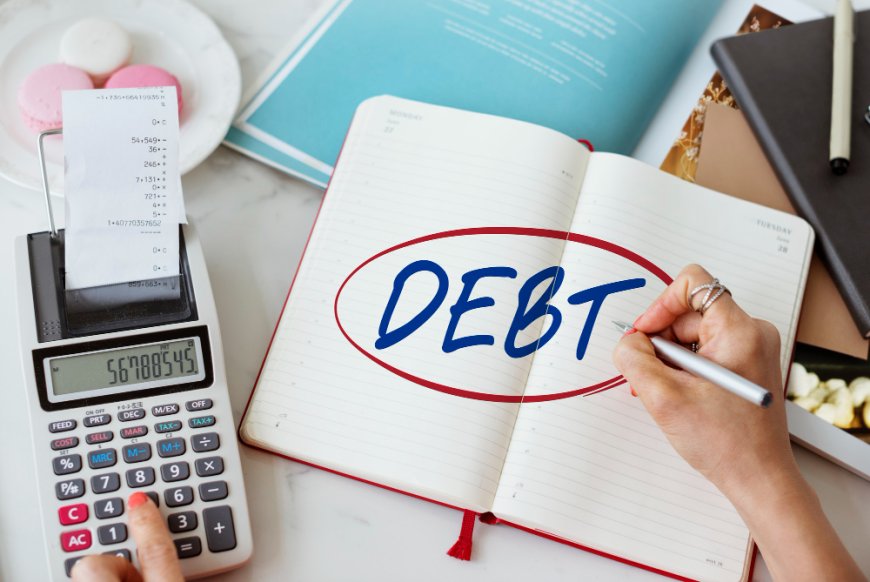Rapid Debt Repayment: How to Pay Off Debt Fast
Discover proven strategies to get out of debt fast. Learn actionable tips to pay off debt quickly and regain control of your financial future.

Debt can be a heavy burden, affecting millions and their financial well-being. According to recent statistics, the average U.S. household carries over $92,000 in debt, including mortgages, credit cards, and personal loans. This staggering figure highlights the urgent need to learn how to get out of debt and regain financial freedom. For many, the path to debt-free living seems daunting, but with the right strategies and commitment, it's possible to break free from financial constraints.
To start the journey towards financial stability, individuals must assess their current situation, create a solid repayment plan, and explore ways to boost their income while cutting expenses. We will delve into effective methods to pay debt, including budgeting techniques, improving credit scores, and considering options like personal loans or home equity lines of credit. By following these steps and staying committed to the process, readers can take control of their finances and work towards a debt-free future, avoiding the need for drastic measures such as bankruptcy.
Assess Your Financial Situation
To get out of debt, individuals need to have a clear picture of their financial situation. This involves calculating total debt, tracking income and expenses, and identifying high-interest debts.
Calculate Total Debt
The first step is to log into all financial accounts and open any unopened bills. Write down the balance, interest rate, and minimum payment for each debt, then add up all balances to determine the total debt. This process gives a comprehensive view of the financial obligations.
Track Income and Expenses
Tracking expenses regularly provides an accurate picture of where money is going. Expenses can be categorized into fixed (like mortgage or rent) and variable (such as food and clothing). Using a budgeting tool like Mint or Empower can help create a budget and track spending
Identify High-Interest Debts
Focusing on high-interest debts is crucial. As of mid-2024, the average credit card interest rate was 24.7%. Prioritizing these debts can significantly reduce the overall amount paid overtime. Additionally, paying down credit cards with high utilization rates (over 30%) can improve credit scores
Create a Debt Repayment Plan
Choose a Debt Payoff Strategy
Two popular methods for debt repayment are the snowball and avalanche methods. The snowball method focuses on paying off the smallest balance first, providing early wins and motivation. The avalanche method prioritizes high-interest debt, potentially saving more money in the long run Consider using a debt paydown calculator to determine which strategy works best for your situation.
Set Up a Budget
To create an effective budget, list all debts, including minimum payments and outstanding balances Calculate your baseline budget by subtracting essential expenses from your take-home pay The difference is your discretionary income, which can be used to accelerate debt repayment. Tools like Empower can help track your progress
Negotiate with Creditors
If struggling with payments, try to negotiate with creditors. They may agree to temporary or permanent reductions. Start with priority bills like mortgage, rent, and utilities. Present a household budget showing income and essential costs to support your case. Be aware that reduced payments may affect your credit rating.
Boost Your Income and Cut Expenses
Find Side Hustles
To accelerate debt repayment, individuals can explore side hustles. Freelancing on platforms like Upwork or Fiverr offers flexible opportunities in writing, design, and programming. For animal lovers, dog walking through Rover or Wag can be profitable. Starting a YouTube channel or selling stock photos on Shutterstock can create passive income streams.
Reduce Unnecessary Spending
Tracking expenses improves financial confidence. Creating a budget that aligns with personal values helps prioritize spending. Cutting costs on recurring payments, such as temporarily suspending gym memberships or reducing takeout, can free up funds for debt repayment. According to Forbes, 99% of U.S. households had at least one streaming service in January 2024, suggesting potential for cost-cutting in entertainment subscriptions
Sell Unused Items
Selling unused possessions can generate extra funds for debt repayment. Platforms like eBay, Facebook Marketplace, or Craigslist are ideal for selling household items, while Depop and Poshmark are suitable for clothing. For handmade crafts or vintage items, consider opening an Etsy shop
The journey to debt-free living requires dedication and a strategic approach. By assessing your financial situation, creating a solid repayment plan, and finding ways to boost income while cutting expenses, you can take control of your finances and work towards a brighter financial future. Remember, the path to financial freedom is unique for everyone, so it's crucial to choose strategies that align with your circumstances and goals.
Taking action today can lead to significant changes in your financial well-being tomorrow. Whether you choose the snowball method to pay off smaller debts first or the avalanche method to tackle high-interest debts, the key is to stay committed to your plan. By using tools like Mint or Empower to track your progress and exploring side hustles on platforms like Upwork or Fiverr, you can accelerate your debt repayment journey. With persistence and the right strategies, you can break free from the chains of debt and enjoy the peace of mind that comes with financial stability.
